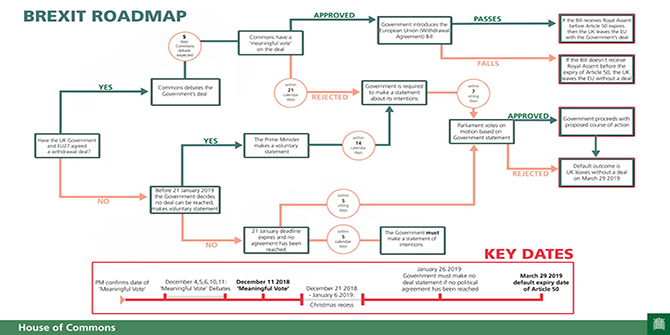Posted by Chris Gilson and Patrick Dunleavy.
Latest Poll Information for 18 April
| Party | Sky News Poll Tracking | LSE Poll Tracking | |
|---|---|---|---|
| Per cent | Per cent | Change | |
| Last Change | 18 April | 18 April | 14 to 18 April |
| Labour | 30 | 28 | -3 |
| Conservatives | 34 | 33 | -4 |
| Liberal Democrats | 25 | 29 | +8 |
| Other Parties | 11 | 10 | -1 |
| Tory Lead | +4 | +5 | 0 |
Nick Clegg’s strong performance in the first leaders’ debate has produced one of the strongest movements in recent British election campaign history. The polls are still bouncing around a lot, but our method takes the median of the last five polls for each of the top three parties and is highly likely to give the correct picture.
On this basis then, Liberal Democrat support has surged 8 points in the two days since the debate, drawing down the Tory support share (-4) slightly more than Labour (-3), but pulling in only a few previous supporters for Other parties (who still have a 10 per cent share). One poll (by the hitherto almost unknown survey company BPix) puts Clegg’s party first, two have them running second and two have them third but close to Labour.
In our table we continue to focus on the Conservative lead over Labour, which stays at 5 percentage points. However, this lead has been falling and in the two most recent polls it is only 3 per cent, pushing the top two parties closer to parity with each other, although at a lower level of support than envisaged in a previous blog post.
In terms of seats in Parliament, the shake-up in the polls has switched all projections towards a deeply hung Parliament, whose operations we describe in detail in our related post. If sustained to polling day (of course, a big ‘if’) the Liberal Democrat surge would mean that Cameron loses almost all hope of gaining the 23 marginal Lib Dem seats he needs to gain a majority. In addition, the surge would mean the Tories lose seats to Clegg’s party at a somewhat greater rate than would Labour. But the fatal thing for the Cameron is that the overall decline in Conservative support saves a lot of sitting Labour MPs’ bacon, and tends to push all the carefully nurtured Tory advantage in the Ashcroft-targeted marginals into irrelevance.
Seat Projections for 18 April
| Party | LSE Poll Seat Projection* | UK Polling Report Seat Projection | Electoral Calculus Seat Projection | 2005 Result |
|---|---|---|---|---|
| Last Checked | 18 April | 18 April | 18 April | - |
| Labour | 276 | 287 | 258 | 346 |
| Conservatives | 247 | 262 | 265 | 208 |
| Liberal Democrats | 96 | 70 | 95 | 67 |
| Other Parties | 13 | 14 | 14 | 11 |
| Northern Ireland | 18 | 18 | 18 | 18 |
| Total Seats | 650 | 651 | 650 | 650 |
| Prediction probably means | Deeply hung Parliament – Labour plus Liberal Democrat coalition government | Deeply hung Parliament – Labour plus Liberal Democrat coalition government | Deeply hung Parliament – Labour plus Liberal Democrat coalition government most likely; but a Conservative plus Liberal Democrat arrangement is just possible | Labour Majority |
* assuming uniform national swing.
Thus the LSE and UK Polling Report seats projections both imply a deeply hung Parliament where Gordon Brown would lead the largest party, virtually committing the Liberal Democrats to making a Labour-Liberal Democrat government work for the first time. The strong efforts already made by Labour to set up the basis for a stable and formal coalition government with the Liberal Democrats would no bear fruit – and we could look forward to Clegg coming in as Foreign Secretary and Vince Cable, Chris Huhne and Ed Davy also in the Cabinet in prominent jobs.
In this scenario, expect major constitutional changes, already anticipated by Brown’s commitments on AV, an elected Senate, and fixed term Parliaments (essential for a coalition agreement to work). However, if the Clegg surge was sustained, the deal would probably need to be sweetened even more– expect the Liberal Democrats to demand and get a Labour commitment to ‘AV Plus’ for the House of Commons (the Jenkins Commission’s reform solution that Blair could not save back in 1999) and to reforming the election system for English local government on full proportional representation lines.
However, our third seats projection by Electoral Calculus’s method is different – because it puts the Conservatives still as the largest party in the House of Commons. In addition, the Tories would certainly have most votes nationwide. So here Clegg could be embarrassed by his campaign commitment to work with ‘the largest party’. We might expect this pledge to be quickly shuffled aside in such a deeply hung Parliament, however, for two reasons. First, the Tories are still completely unprepared for a hung Parliament situation. Cameron began looking at scenarios involving this only around 5 weeks ago, and his party has a visceral opposition to the constitutional changes that the Liberal Democrats must get to secure their position. Clegg might want to deal with them, but a humiliated Tory leader has little to offer him. Second, of course, Gordon Brown would still be the incumbent PM with first crack at the whip in forming a coalition, and Labour already has all its ducks in a row. If Clegg turned down an offer like that above on a point of principle, then he would be jeopardizing his party’s whole future. It would not be hard to find the right pretext for doing a deal with Brown after all – the urgency of getting the nation’s finances put to rights in a four year government would make a good, patriotic excuse.







